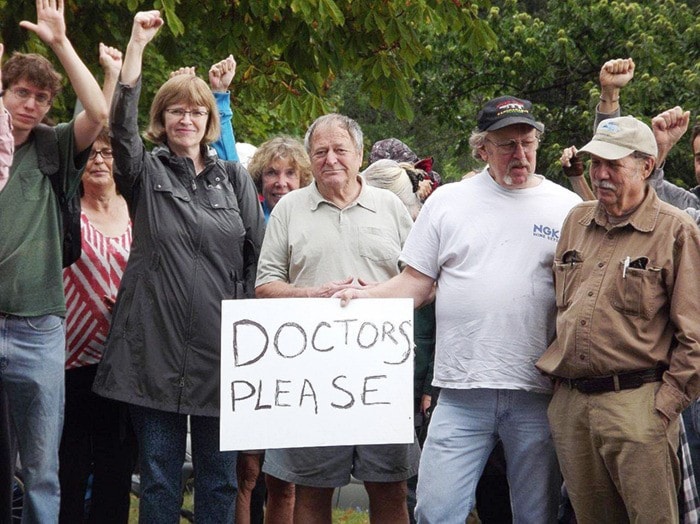Kaslo finds itself in the same position as this time last year: having been granted a last-minute reprieve in the reduction of its emergency room hours.
The year began on a promising note, as the health authority pledged to work with the community on its physician shortage and to find a health care model everyone could live with.
The health centre is funded for two full-time equivalent physicians, which is divided into four half-time positions. But in March, Dr. Linda Johannson and Dr. Denis Thibodeau posted letters at the health centre telling patients they would be leaving.
“You are likely aware of the difficulties that the physician team has had here trying to maintain services in the clinic and the emergency room,” Dr. Johannson wrote. “These difficulties have progressed to a point where I feel I can no longer provide safe, appropriate care to my patients and [Interior Health] has elected not to renew my contract for services.”
Thibodeau didn’t specifically point to the issue of emergency room coverage, instead citing his decision to open a private clinic. Interior Health did fill one vacancy, but that didn’t change the ongoing staffing shortages at the emergency room, which closed temporarily about 40 times.
In September, residents rallied in support of their facility and held a packed meeting to discuss a report by a Nova Scotia physician exploring the state of emergency care in Kaslo, which suggested services be maintained with remote physicians supported by a nurse practitioner.
Dr. John Ross also recommended community involvement in the recruitment process. “Problems relate mostly to process, staffing, communication, relationships, organization, and innovation challenges,” he wrote. “These can all be addressed and resolved.”
Residents were disappointed Interior Health didn’t embrace the report’s findings and instead announced the emergency room would be reduced to part-time hours as suggested a year earlier. Things deteriorated to the point that village council passed a motion of non-confidence in Interior Health’s senior management.
Mayor Greg Lay said a year of working with the health authority to solve the doctor shortage produced no results: “Interior Health came back to us with nothing. No change in ambulance service, no change in paramedics, no change in nurse practitioners, no change in contracts for physicians,” he said.
The local Chamber of Commerce also worried the looming cuts would affect the community’s economy.
The health authority finally dropped the bomb last month: it announced that as of January 6, Victorian Community Health Centre’s emergency department will only be open Monday to Friday from 9 a.m. to 5 p.m. Anyone needing help outside those hours will have to go to Nelson.
“We firmly believe consistent, daytime hours of service will help us resolve our ongoing physician recruitment challenges,” Interior Health vice-president Andrew Neuner told village council. “Once we have a stable pool of physicians in place we can build the foundation for a strong, robust primary care centre.”
Residents, however, didn’t buy it — about 200 of them gathered outside the meeting for a candlelight vigil to lament the loss of their ER services.
“We’ve known it was coming. We’ve been trying to save it off but to no avail,” said Maggie Winters, part of the Kaslo and area health care working group.
But just before Christmas, Interior Health announced it was putting the changes on hold until April 1 while it considered a proposal by a group of physicians to work on a fee-for-service model. Although further service interruptions are expected, the health authority says 24/7 coverage will continue for now.
“More discussions are needed to see if we have found an answer to the long-standing staffing challenges, and we felt it was important to hold off on any permanent changes to see if there is an alternative solution,” said Dr. Michael Purdon, executive medical director of community and residential services.
